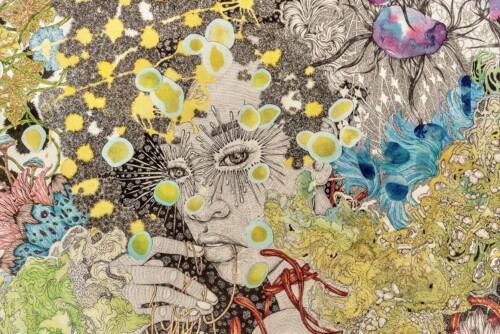Demographics
Who are the women immigrating to the United States today? In 2004, the top ten countries from which U.S. adult women originated (in order beginning with the highest) were Mexico, China, the Philippines, India, Vietnam, South Korea, Cuba, El Salvador, Germany, and Canada.1 The top states in which foreign-born women reside (in order, beginning with the highest) are California, New York, Florida, Texas, New Jersey, Illinois, Massachusetts, Arizona, Washington, and Virginia. Significantly, these states represent every geographical corner of the United States, and include states that were traditional gateways for new immigrants—New York and California, for example—and the “emerging gateway” states that have only recently begun to attract large numbers of immigrants from the post-1965 wave—Virginia and Washington. After arrival, a substantial proportion of these women enter the U.S. labor force, where they are employed in all ranges of the socioeconomic spectrum. While many are running their own businesses and moving into professional-level jobs, there continues to be a strong concentration of immigrant women in low-wage labor. In 2003, 61.7% of employed foreign-born women earned less than $25,000 per year, in contrast to 54.4% of employed native-born women.2
Women Caught in the Criminal Legal System3
What do we know about women in prison? The number of women (across ethnic groups and nativity) in state and federal prisons has increased eight-fold, from 12,300 in 1980, to 107,518 in 2005.4 An additional 94,571 women were held in local jails in 2005,5 with another 956,200 out on probation and 93,000 on parole.6 This means that more than 1 million women are under the control of the criminal justice system. This feminization of the prison population is reflected most intensely in racially disadvantaged groups. Two-thirds of female federal inmates in state and federal prisons and local jails in the United States are women of color (primarily Black and Latina).7 Thus, it is key to understand the racialization of prisons as well as their gendered (and classed) nature: it is primarily poor men and women of color caught in the criminal justice system.8
More than 70% of women inmates are incarcerated for non-violent crimes such as fraud, drug offenses and sex work (prostitution in the criminal justice lingo). Women in state prisons in 2003 were more likely than men to be incarcerated for a drug offense (29% vs. 19%) or property offense (30% vs. 20%) and less likely to be incarcerated for a violent offense (35% vs. 53%).9 These women’s involvement in the drug trade does not translate into higher rates of drug use or addiction. Black and Latina women and men are much more likely to be incarcerated for drug offenses, even though they are not more likely to use drugs than the white population. In New York State, almost 80% of women who were incarcerated for drug offenses in 2007 were women of color. Of all women incarcerated in New York State, 47% are African-American and 22% are Latina.10 The Women’s Prison Association observes: “Yet despite their roles as relatively minor players in the drug trade, women—disproportionate numbers of them African American and Latina—have been ‘caught in the net’ of increasingly punitive policing, prosecutorial, and sentencing policies.”11 Foreign-born women, in fact, are often used as drug “mules”—they are used to import and/or export illegal drugs across borders; in these cases, women are conduits in the trade but not principle dealers. Human trafficking is also directly related to immigration. An unknown number of foreign-born women arrested for prostitution and/or drugs have been trafficked into this trade, and are virtually enslaved. The U.S. State Department’s 2005 estimate was that 17,500 to 18,500 people are trafficked into the United States annually across all forms of forced labor, although estimates are rough.12 While it is sex workers who are more commonly arrested, the traffickers often escape, as they are much more difficult to track down.
Incarcerated women share a range of experiences as women in U.S. society, further supporting the need to take a gendered perspective in analyzing incarceration: More than half the women in state prisons have been abused prior to their incarceration: 47% physically abused and 39% sexually abused (with many being survivors of both types of abuse).13 Additionally, nearly 20% of imprisoned mothers report that they had been homeless the year prior to their incarceration,14 which for some of these women is likely to be a result of the abuse they were escaping. An even more commonly shared demographic experience between these imprisoned women is that of motherhood: More than 65% of women in state prisons are mothers of children under the age of 18.15
In addition to the physical and emotional problems these women face from abuse both prior to their imprisonment and while in prison, a range of additional health care needs also surface. Nearly a quarter of women in state prisons, for example, have a history of mental illness. And 2.4% women in state and federal prisons were HIV positive in 2004, compared with 1.7% of men. The women’s figures rate as high as 14.2% in New York State and 15.6% in Rhode Island.16
- American Community Survey, U.S. Census Bureau, 2004. [↩]
- Susan C. Pearce, “Immigrant Women in the United States: A Demographic Portrait” (Washington DC: Immigration Policy Center), Summer 2006. [↩]
- Unless otherwise indicated, this section is from Factsheet: Women in Prison, The Sentencing Project, Source: Bureau of Justice Statistics, 2004. It is based on Sokoloff’s presentation in “Women Prisoners at the Dawn of the 21st Century,” op. cit. and Natalie J. Sokoloff, “The Impact of the Prison Industrial Complex on African American Women,” Souls: A Political Journal of Black Politics, Culture and Society, 5(4):31-46, Fall 2003. [↩]
- Paige M. Harrison and Allen J. Beck, “Prisoners in 2005” (PDF), Bureau of Justice Statistics Bulletin, Washington, DC: U.S. Department of Justice, November 2006, 4. [↩]
- Paige M. Harrison and Allen J. Beck, “Prison and Jail Inmates at Midyear 2005” (PDF), Bureau of Justice Statistics Bulletin, Washington, DC: U.S. Department of Justice, May 2006, 8. [↩]
- Lauren E. Glaze and Thomas P. Bonczar, “Probation and Parole in the United States, 2005,” Bureau of Justice Statistics, U.S. Department of Justice, November 2006. [↩]
- Lawrence A. Greenfeld and Tracy L. Snell, “Women Offenders” (PDF), Bureau of Justice Statistics Special Report, 1999. [↩]
- For an analysis of how race historically influences the prison system in the U.S., see Loic Wacquant, “From Slavery to Mass Incarceration: Rethinking the ‘Race Question’ in the United States.” New Left Review, 2nd series, 13 (February 2003): 40-61. For an analysis of the race, class, gender intersectional approach to crime and justice, see Barbara Raffel Price and Natalie J. Sokoloff (eds.), The Criminal Justice System and Women: Offenders, Prisoners, Survivors, and Workers, 3E. New York: McGraw-Hill and Julia Sudbury (ed.), Global Lockdown: Race, Gender, and the Prison-Industrial Complex. New York: Routledge. [↩]
- “Fact Sheet: Women in Prison,” The Sentencing Project, December 2006. [↩]
- “Women Prisoners and Substance Abuse Fact Sheet,” Women in Prison Project of Correctional Association of New York, 2002. [↩]
- Judith Greene and Kevin Pranis, “The Punitiveness Report,” Women’s Prison Association. [↩]
- “Fact Sheet: Distinctions between Human Smuggling and Human Trafficking” (PDF), Washington, DC: U.S. Department of Justice Human Trafficking and Smuggling Center. [↩]
- Caroline Wolf Harlow, “Prior Abuse Reported by Inmates and Probationers” (PDF), Bureau of Justice Statistics Selected Findings, April 1999. [↩]
- “Women in Prison Fact Sheet” (PDF), Women in Prison Project, Correctional Association of New York, 2002. [↩]
- “Imprisonment and Families Fact Sheet” (PDF), Women in Prison Project of Correctional Association of New York, March 2007. [↩]
- Laura M. Maruschak, “HIV in Prisons, 2004,” Bureau of Justice Statistics Bulletin, November 2006, NCJ213897, p. 3. [↩]




